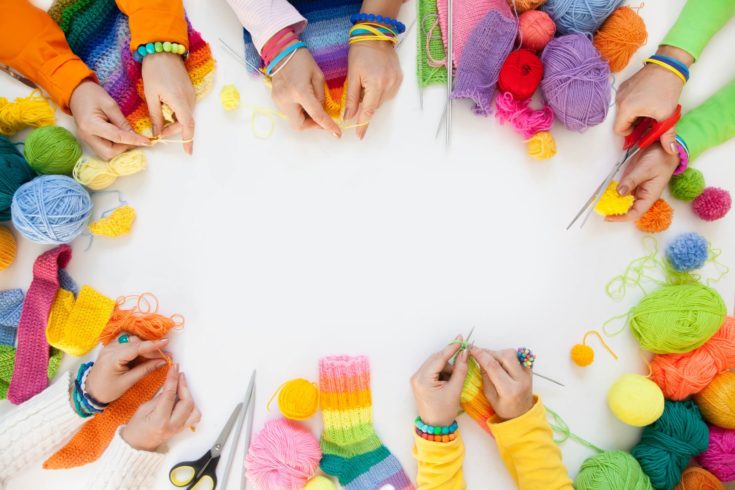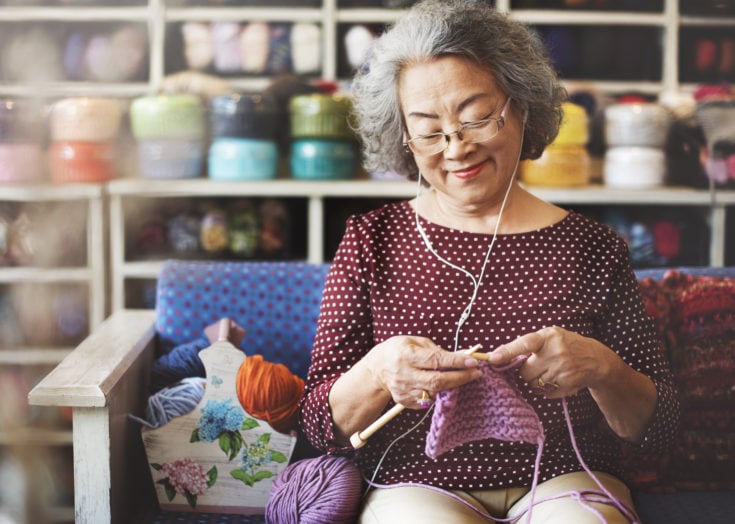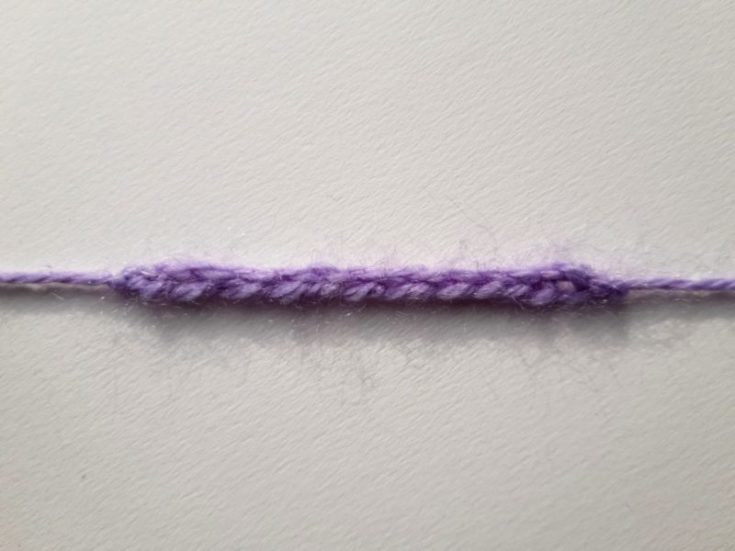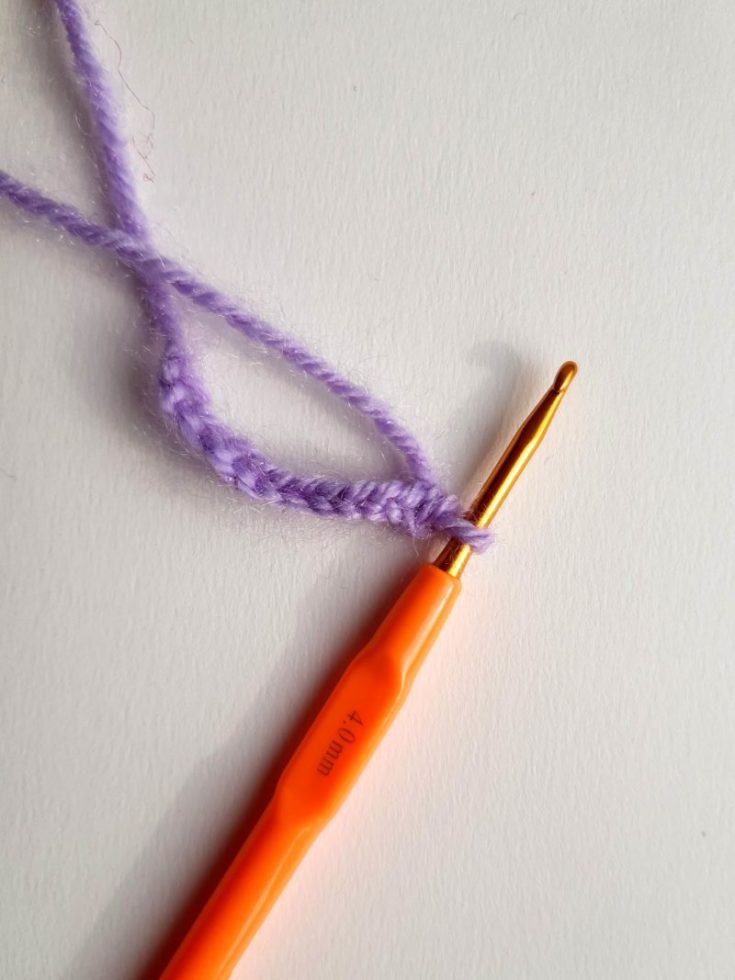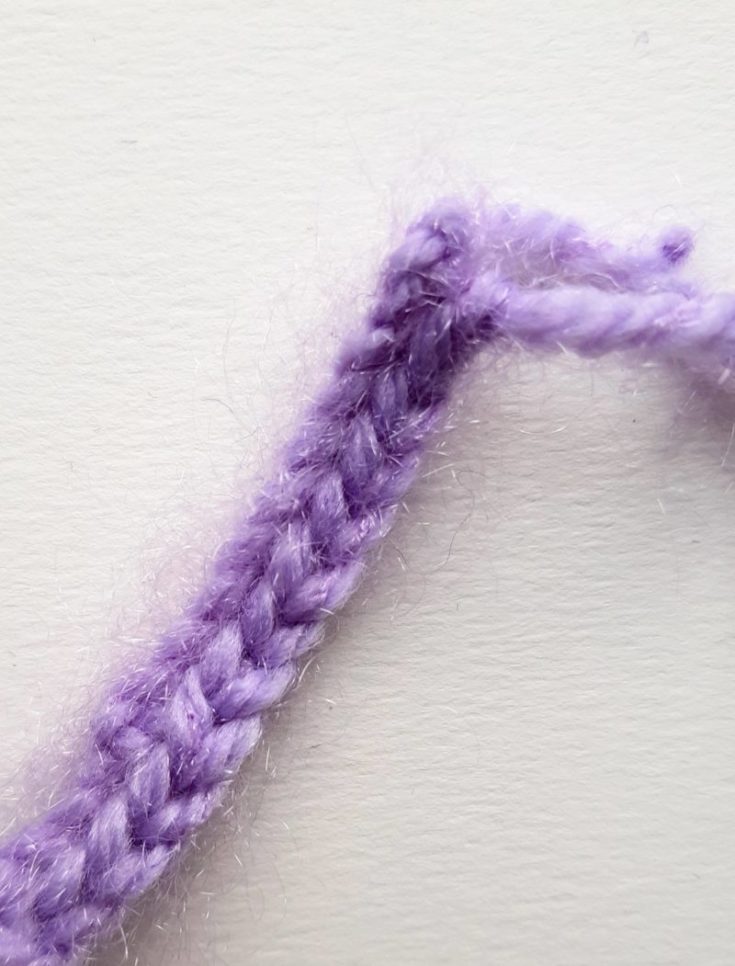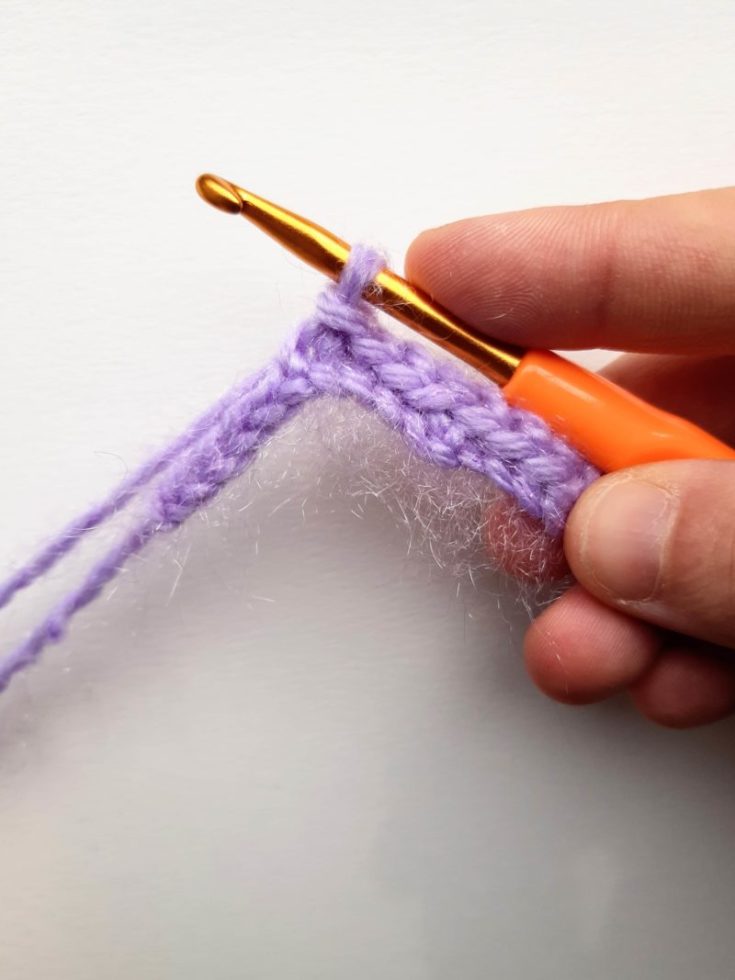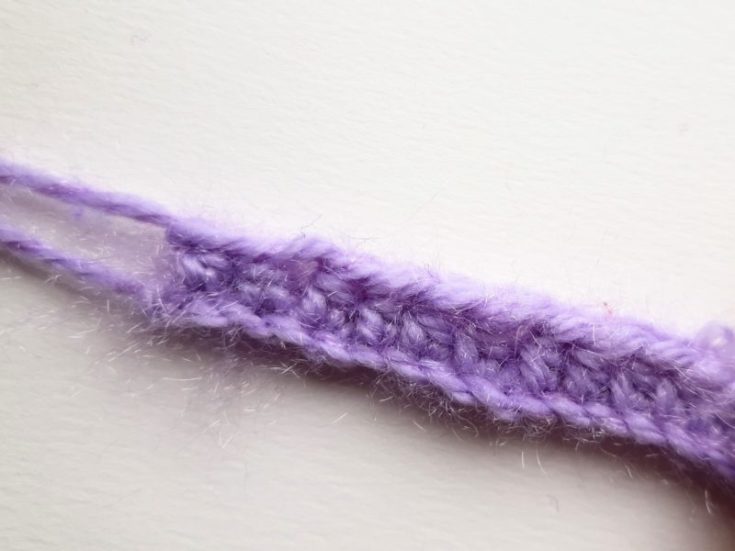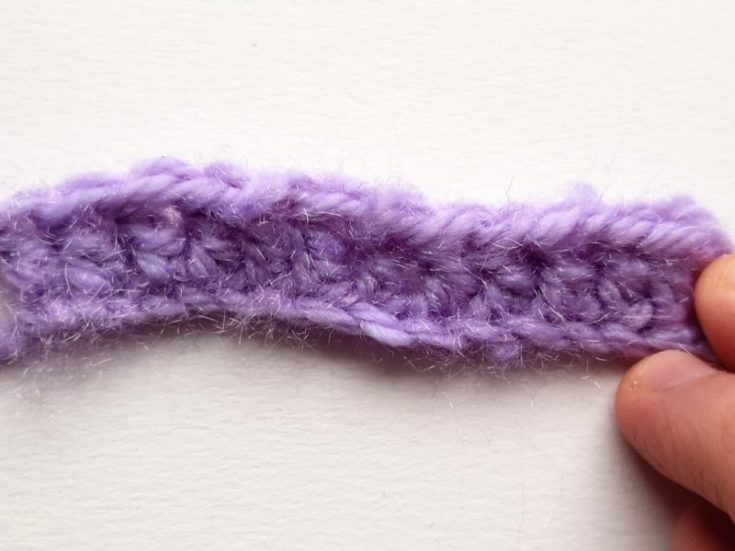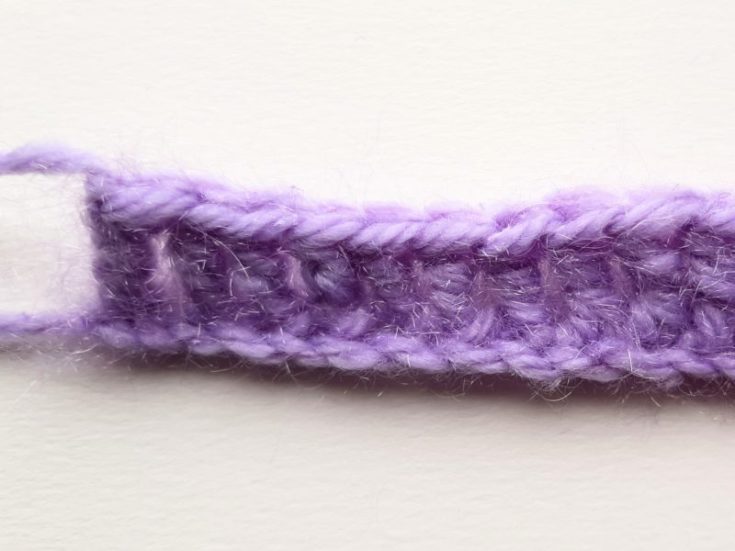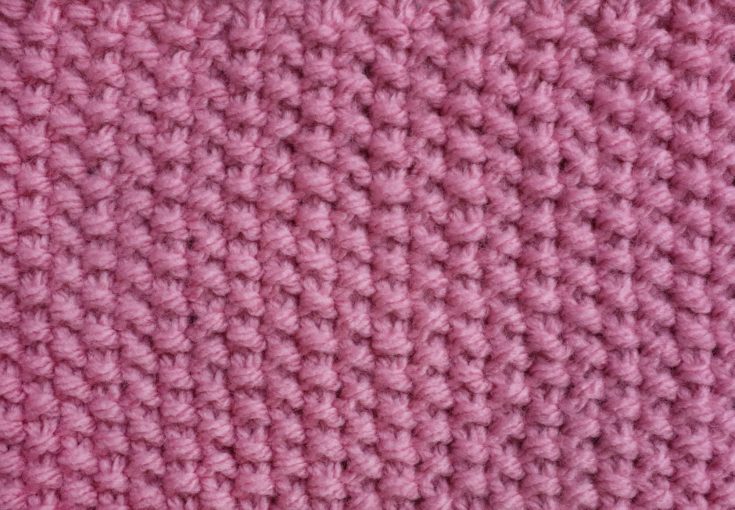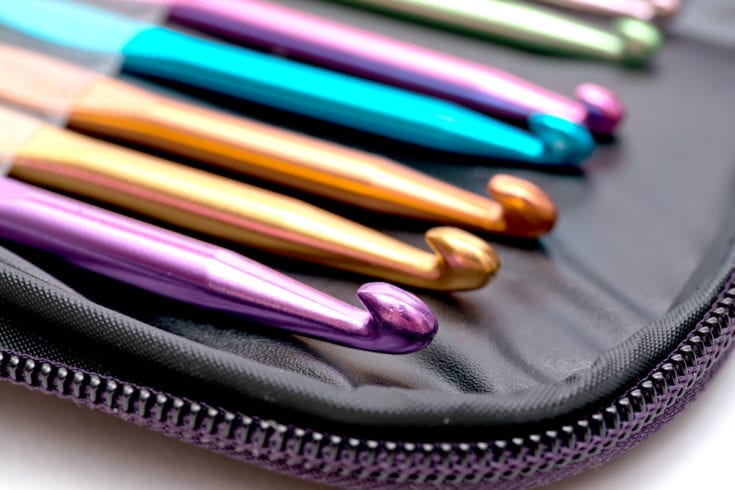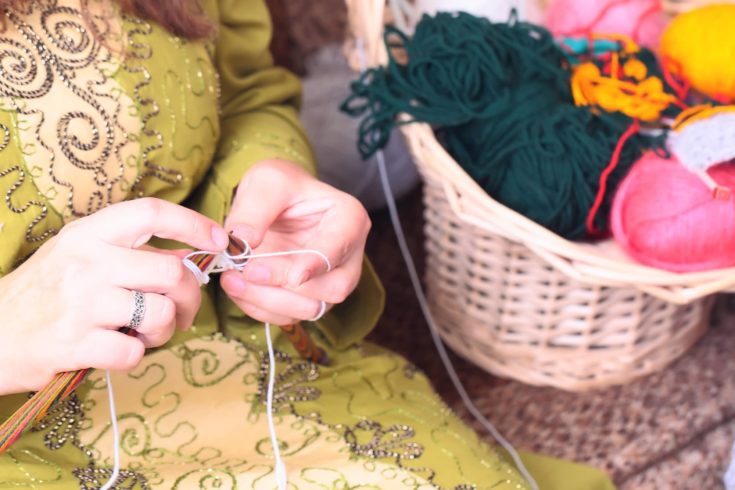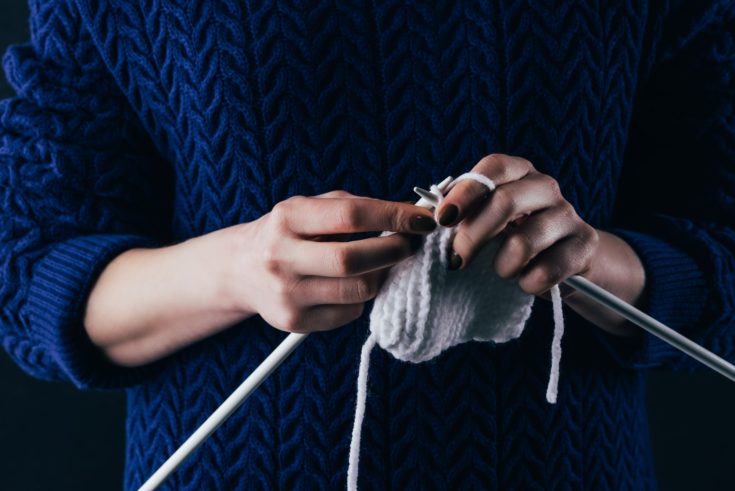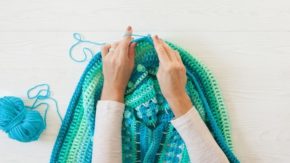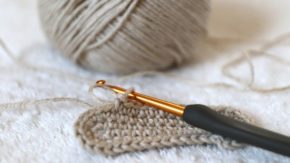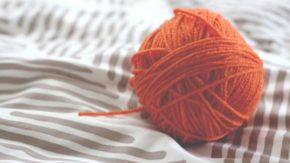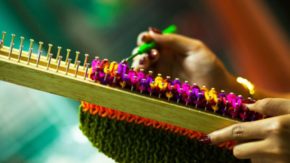Crocheting is often referred to as yarn crafting, and nobody could have thought of a better name. It literally means taking something as raw as a ball of yarn and turning it into things you didn’t possible. A lot of people say that crocheting is a long lost art, but craft enthusiasts are now starting to bring it back to life and for plenty of good reasons. Here are some tips on the basic stitches in crochet.
Why Crocheting Is Awesome
Who knew that crocheting can have actual mental benefits? It is one of the least expensive hobbies in the words, one that you can tackle at any time of day or night because all you really require is your crochet hooks, some balls of yarn, and a little bit of light. As you take on this amazing craft, you will learn that:
- It can reduce anxiety and stress. Just like any other hobby, for that matter. There is a good reason why therapists suggest taking on a hobby if you feel that stress and anxiety are overwhelming. That’s because something like crocheting pushes you to focus on what you’re actually doing, and even when you’ve mastered it up to a point where your movements are mechanic, you still get to enjoy the mental benefits of doing something amazing.
- It can reduce the risk of Alzheimer’s. It might sound a little far-fetched, but think of it this way: knitting is basically a cognitive exercise that causes mind stimulation. When you dive into knitting, you are forcing your mind to access past memories that will allow you to remember every stitch and every technique, so it’s basically like training your brain to remember things you’ve learned in the past. Even when you’ve mastered the craft, you will need new patterns to work with for more creative and new projects, so crocheting will still demand your attention and put your brain to work.
- It builds confidence. One of the greatest things about having a hobby that requires you to craft something is the satisfaction you end up having. Even if you are your worst critic and decide that you could have done better, in the end, it is still something you’re doing with your own two hands, and that will give you something to take pride in.
- It saves you money. And not just because the investment is kept to a minimum, but also because knitting can teach you to make things that you can actually gift people. You can make a new sweater, scarf, winter hat, table ornament, whatever you fancy. The important thing is that you will find a way to enjoy your free time while also making something productive and personalized, to have your friends and family remember you by.
The 6 Basic Stitches You Can Learn Today
Knitting isn’t something that you’ll learn overnight, but it is something that you can get started on right away. The first few times, you’ll probably need an instruction manual to remember even the most basic stitches (just kidding, the internet is filled with information) but, unlike other crafts, crocheting is something that you can actually get the hang of quite fast.
Chain stitch
This is one of the simplest stitches you can learn. It is great for beginner’s crochet projects, mostly because it’s also known as a starting chain or a foundation chain. However, in order for you to perform a chain stitch, you will also have to learn how to make a slip knot, which is the very first step required in a crochet project.
The slip knot is made on the crochet hook at a distance of approximately six inches from the yarn’s free end. Use the yarn to create a look, making sure that the yarn’s free end is dangling behind it. Once you’ve created that loop, you can insert the crochet hook through it, also hooking the free end. Pull through and up towards the hook’s working area. You can now tighten the loop by pulling the free end of the yarn.
Now you can start working in the chain stitch itself. Hold the slip knot’s base between the index finger and thumb on your left hand. Pull the yarn over the crochet hook. Hook it, then draw the yarn through the slip knot’s hook. As the yarn reaches the working area of the hook, you will have created your first chain stitch. As you repeat this process, you will create your second chain stitch, and so on.
Slip stitch
The role of slip stitches is often underestimated because it’s one of the simplest and smallest crochet stitches, but it can be an excellent technique for a beginner to master. Since this type of stitch is mostly done on projects you’ve already begun, you can use an active loop from your crochet hook to start working on it.
Use the tip of the hook and that active loop and then pull the yarn through. This newly-created loop will then go through the active loop of your crochet hook.
Single crochet stitch
Aside from the two techniques mentioned above, you will have to know how to make a single crochet stitch if you actually want to start a new project. However, in order to start working on this type of stitch, you will first need a foundation of chain stitches.
Pass the hook on your crochet through the first chain of the first row, then subsequently do the same for the stitch from the row below, and so on. You can draw up a loop using the crochet hook by wrapping the yarn and using the hook to grab it.
You can now create a new loop by simply pulling your hook in order to have the yarn pass through the loops. If you’ve done this correctly, you should have two loops on your crochet hook. Repeat the process of wrapping the yarn around the hook again and then pulling it through the two loops.
Half double crochet
For this stitch, you will also need a foundation chain to get you started. Once you’ve made your slip knot and your chain stitch, you will have to crochet into the foundation chain which is located at a three-chains distance from your hook.
Once you have these two loops on your crochet, pass the yarn over it and pull it through the stitch. When performed correctly, you should have three loops on your hook. Pass the yarn over again and then pull it through the three aforementioned loops. The end result is your very first half double crochet stitch. You will have to repeat the process until you complete the row.
Double crochet stitch
In order to learn how to make the double crochet stitches, you will need a starting row plus a turning chain. This turning chain is what helps you move from one row to another, without altering each row’s height.
As you have a stitch on the hook, pass the yarn over it. Insert your crochet took into any particular space you want. It is common for projects that start with a foundation chain to tell you to use the fourth closest chain and insert the hook there.
Pass the yarn over the hook into a position where the hook can grab it. This is where things start to get just a little bit tricky because you need to make sure that you’re wrapping the yarn as you did before inserting the hook. This particular step is very important because the amount of yarn that is now on your hook will make it more difficult for you to work with it, at first.
You should now be able to pull the string of yarn through the two loops that you already had on your hook, thus ending up with only two loops. Then, pass the yarn over the hook again, but this time only pull it through the first two loops (the ones that are closest to the hook).
If you’ve done everything correctly so far, you should have two loops on your hook at this point. Pull the yarn over the hook again and draw it through the two loops. And that’s how you make a double crochet stitch.
Treble crochet stitch
The treble crochet it very useful when you want to create a double crochet stitch, only taller. In order to create a treble crochet stitch, you will have to follow a path similar to that for the double stitch. Pass your yarn over the hook twice and then pass the hook into the next stitch.
Pass the yarn over the hook once again and draw it through the stitch. If you’ve done it correctly so far, you would have four loops on your hook at this point. Pass the yarn over the hook again and pull it through two loops, so that you end up having only three loops on the hook.
Pass the yarn over the hook one more time, and then pull it through the two loops that are closest to the hook. You should now have only one loop on your hook, thus completing your very first treble crochet stitch.
Other Crochet Stitches
The six stitches shown above are generally accepted as being the most basic ones of all. However, once you’ve mastered these, there are other stitches that you can move on to. You can consider them transitioning stitches that will prepare you for more advanced knitting techniques:
- The moss stitch: When you bring together two crochet stitches (the chain stitch and single crochet stitch), you end up with the moss stitch.
- The Elizabeth stitch: This stitch is easy to recognize thanks to its raised rounded shapes that stand out from a flat surface stitch. It makes the end result (be it clothing or something else) look really fluffy.
- The puff stitch: The name of this stitch is pretty self-explanatory. It basically creates these puffy clouds that make your work look adorable. It is a great texture for fancy winter sweaters, but also for making blankets and scarves.
- The popcorn stitch: This is a trickier one because it is actually a variation that resulted from several other types of stitches. It also requires a lot more yarn compared to other stitches, but using it can make some really great blankets.
- The shell stitch: when you put your hook down and look at it, you can really see that the stitch you’ve just mastered has created a bunch of different seashells. It is amazing to try out when you’re making baby and children’s clothes as it looks adorable.
- The star stitch: Speaking of adorable stitches, you will love how your work looks when you’ve embedded the star stitch into your projects. Some might also argue that the stitch looks like a flower, but it’s gorgeous nevertheless.
Beginner’s Crochet Tips
Since this article was written for those who’ve just taken a liking in this form of craft, we’re going to assume that you can use a bunch of tips that will make diving into knitting a whole lot easier (and thus more pleasant):
- The first thing that you want to know is how to choose a hook. Hooks that are designed for this craft are made from anything from wood to metal, and they can be large or small, depending on what you’re looking to make. Generally speaking, you want a hook that about six inches long. You will also notice that hooks are sized with letters from B to Q (small to large).
- Then, you need to know that between your projects, you might want to switch hooks. For example, if you’re working and notice that your work is too tight, you will need a larger hook. Consequently, you will need a smaller hook if your work is too loose. However, you want to avoid changing hooks right in the middle of a project, because your end result might lack consistency if you do. Also, note that the size of a hook might be different from one manufacturer to another.
- You should also make sure that the yarn is positioned correctly before your start crocheting. As you go along, you will notice how important it is that the yarn easily unfolds while you’re working. For example, if you’re sitting on a chair, you can place the ball of yarn at your feet, but you might want to place it in a basket or something of the sort, just to make sure that it doesn’t roll around and unwind all over the place.
- Believe it or not, there is actually a device that can count the rows in your stitching project. It doesn’t cost very much, but if you don’t want to buy one, you will have to count your rows manually. You might want to have a pen and paper at hand for that. Another important tip is to count your stitches as well because you might end up losing count as you move from one row to another. If you don’t do that, you may notice that your rows are uneven in the end.
- Mistakes are human, and there are high chances that you’ll make them as you learn to master new stitches and techniques. However, if you’ve made a mistake, it’s fairly easy to erase and rewind, which is a benefit that you don’t usually get with other crafts. All you have to do is unravel by pulling the stitches up to that point and then pick up from there.
- Crocheting will involve a lot of hand movements, so you have to make sure that you get obstacles out of your way. No, it doesn’t mean that you should clear the table in front of you. It does, however, mean that you should tie your hair if you have long hair strands because you could end up tangling it in your work. If you have any jewelry that might get in the way (like loose bracelets or big rings), you should take that off as well. Also, if you have any children or pets, make sure they are nowhere near your yarn, pulling it or paying with it (cat owners, beware).
- Have fun. Just because knitting is something that requires concentration, it doesn’t mean that you can’t play your favorite tunes in the background or light some aromatherapy candles and enjoy your hobby to the fullest.
Conclusion
Crocheting can be a very rewarding hobby, particularly because it also requires very little investment upfront. It has proven to be a craft that brings plenty of mental benefits to the table but can also render results that make excellent birthday gifts or decoration items and, why not, even clothing.
The basic crochet stitches we’ve shown you are suitable for anyone who has a ball of yarn and a pair of crochet hooks, so you can start working on them immediately. They are easier to master compared to other more advanced techniques, but they are essential as pillars of the knitting world.
**Also see our post on crochet edges to have in your arsenal.**
